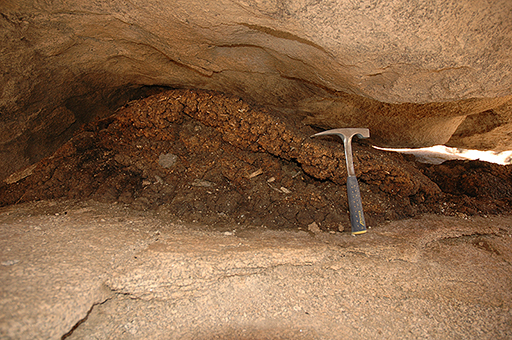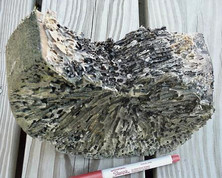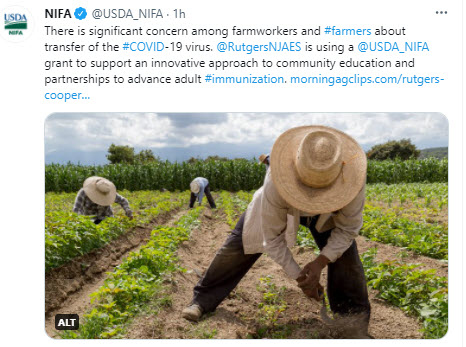| Having trouble viewing this email? View it as a Web page.  | |
| Editor: Kelly Sprute July 14, 2021 Making a Difference  Middens give scientists the opportunity to sequence the DNA of ancient insects trapped inside, courtesy of Julio Betancourt. Pack Rat Nests Offer First Look at Ancient Insect DNA For many years, scientists have been extracting DNA from the bones of ancient humans, humanoids, and animals to paint a picture of evolution and species movement. They have had little success extracting genetic material from the preserved remains of insects. Insects leave scant DNA behind, and little of it is preserved over time. However, a Purdue University scientist has developed a novel way to use extraction methods previously reserved for ancient vertebrate DNA to isolate and amplify insect DNA, thanks to the urine-caked nests of ancient desert pack rats. The technique is giving scientists their first glimpses of the genetic makeup of insects from more than 34,000 years ago. Aaron Smith, the lead author of the paper describing the work, received support from USDA's National Institute of Food and Agriculture. For more information, read this Purdue University article. | |
 USDA Assists Farmers, Ranchers, and Communities Affected by Tropical Storm Elsa Agriculture Secretary Tom Vilsack has directed the U.S. Department of Agriculture (USDA) to aid recovery efforts for farmers, ranchers, and residents affected by Tropical Storm Elsa. USDA staff in offices across the country are ready to respond with a variety of program flexibilities and other assistance to producers and communities in need. For more information, read the USDA press release. Tropical storm seen from space, courtesy of NASA. |  Emergency Crop Insurance Procedures in Drought-Impacted Areas USDA set forth emergency procedures for producers in drought-affected parts of the country which will allow them to receive greater flexibilities within their crop insurance policies. USDA's Rod Bain talks with Risk Management Agency Acting Administrator Richard Flournoy on what producers can do in affected areas. For more information, listen to the USDA broadcast. Drought in corn field, courtesy of Adobe Stock. |  NIFA Career Opportunities We are hiring! Remember to check out NIFA's Career Opportunities webpage, where there is a direct link to all open positions. You can also explore NIFA jobs at the USAjobs.gov website. Current openings in Kansas City, Missouri: Supervisory Biological Science Specialist (Division Director) (GS-15)
Closing Date: 07/15/2021 Budget Analyst (GS 9-12)
Closing Date: 07/26/2021 |  The Two-Thousand-Year-Old Mystery of the Havoc-Wreaking Worm Humans have known for over 2,000 years that shipworms are responsible for damage to wooden boats, docks, dikes, and piers. Today, shipworms cause billions of dollars of damage a year. New research from the University of Massachusetts Amherst reveals that we still don't know the most basic thing about them: how they eat. The nutritious part of wood, cellulose, is encased in a thick and extremely difficult-to-digest layer of lignin. Researchers are still trying to figure out what within the shipworm could be responsible for breaking down the lignin. It has long been thought that symbiotic bacteria living in shipworms' gills also had the enzymes, but the research shows they do not. This work was supported in part by USDA's National Institute of Food and Agriculture. For more information, read the UMass article. Section of a piling attacked by shipworms in Belfast, Maine, courtesy of the University of Massachusetts Amherst. |  Researchers Target Food Loss and Waste Reduction Research suggests that 40 percent of food produced in the U.S. is lost or wasted, while one in eight households experiences food insecurity. The pandemic has created uncertainty at the retail level of the food supply chain, potentially altering food shopping and inventory management practices. Researchers at University of Tennessee Institute of Ag (UTIA) have received a $423,316 grant to study food loss and waste reduction at the consumer-grocery retailer interface. Funding is provided by USDA's National Institute of Food and Agriculture. "This study will provide a results-driven set of recommendations for future voluntary food loss and waste reduction programs," said UTIA Professor, Lead Researcher Kimberly Jensen. "Findings will provide estimates of how food loss and waste information shapes consumers' choices in products, stores and at-home practices." For more information, read the UTIA article. Woman cleaning-out the refrigerator, courtesy of Adobe Stock. |  Youth Arise Youth Arise is a youth civic engagement program designed for middle-school students. The goal of the program is to increase youth's understanding of civic engagement, social entrepreneurship, and leadership and to help youth learn how to become involved in their community. The program aims to engage socioeconomically disadvantaged communities and underserved youth. The Youth Arise program is implemented by the University of Nebraska–Lincoln Extension 4-H and funded by the National Institute of Food and Agriculture's Child, Youth, and Families at Risk program. For more information, read the University of Nebraska article. Young student asking a question at school, courtesy of Adobe Stock. |  | |
| NIFA's mission is to invest in and advance agricultural research, education, and extension that solve societal challenges. NIFA's investments in transformative science directly support the long-term prosperity and global preeminence of U.S. agriculture. Keep informed about NIFA, USDA, our land-grant and non-land-grant university partners, and stakeholders with the NIFA Update. Read past issues online, sign up for email updates or follow us on Twitter @USDA_NIFA, #NIFAImpacts or LinkedIn @usda-nifa. If you wish to submit a news item or information, send an email to NIFAUpdate. USDA is an equal opportunity lender, provider, and employer. | |

No comments:
Post a Comment